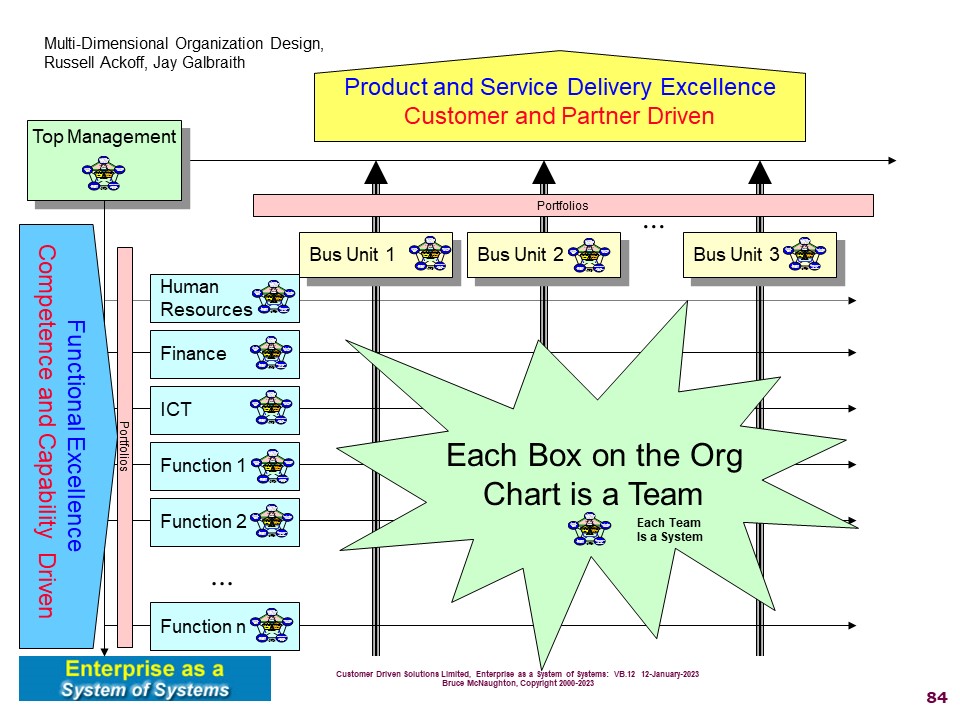Description
To represent the structure of the teams or organizational units comprising the organization (or a part of an organization).
The organization chart is generally accompanied by a table listing the information about each team (or this may be available through the organization chart).
Contents
For each team:
-
Identify the parent of the team, the type of the team, the manager of the team
Languages, Notations, Conventions
Typically a hierarchical representation of the organization.
However, the structure may also be presented as a multi-dimensional matrix (typically two axis) or a circle with more teams on a wider circle.
Methods - Create, Analysis, Identify
There are a number of approaches to Organization chart management.
1) Identification of Input, Output and Marketing Teams (and teams within them). (Russell Ackoff's model)
2) Identification of Teams within the 3 top sub systems ... Management, Innovation / Marketing, and Delivery.
Note: a lot of these specific approaches are documented in the Organizational Design Process (organizing activity of a manager).
Where necessary the decisions for the specific teams within the structure will be driven from the process not the model.
Note: Team Types and Team status can allow multiple organizational structures to fit within the same models. (Team Type and Team Status are part of the Organization Design Process).
Modelling Techniques
Draw organization charts using visio, powerpoint, or other type of tools (Oracle). Note the specific form is not as important as the accuracy of the whole organization.
Typically the challenge is making sure that there is always a current (Active) organizational structure that forms the basis for change management.
An Organization Structure (Organization Chart, or some other diagram) describes the relationships between the various teams identified in the management system.
This diagram should also indicate the type of team that is represented on the diagram... the types might be:
- Governance
- Org Unit (Permanent)
- Project (Temporary)
- Programme (Temporary)
- Specialist (Temporary)
- Supplier (External)
- Customer (External).
See the following documents to understand the key elements of an organization.
Examples
Hierarchy
Circle
Matrix (See Lean thinking, See
Multi-dimensional

References
Model Kind Links